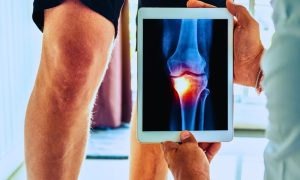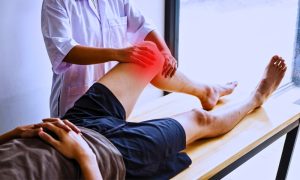Comprehensive Tendon and Ligament Tear Treatment in Chennai: Expert Care for Full Recovery
 Tendon tears and ligament injuries are common among athletes and active individuals, leading to significant pain, swelling, and impaired mobility. Effective tendon tear treatment and ligament tear treatment are essential for restoring normal function and preventing long-term complications. The primary goals of treatment include alleviating pain, promoting healing, and ensuring full recovery.
Tendon tears and ligament injuries are common among athletes and active individuals, leading to significant pain, swelling, and impaired mobility. Effective tendon tear treatment and ligament tear treatment are essential for restoring normal function and preventing long-term complications. The primary goals of treatment include alleviating pain, promoting healing, and ensuring full recovery.
The best knee ligament tear treatment often involves a combination of non-surgical and surgical approaches tailored to the severity of the injury. Non-surgical treatments include rest, ice, compression, and elevation (RICE), along with physical therapy to strengthen the surrounding muscles and improve joint stability. Additionally, bracing or immobilization may be recommended to protect the injured area during the healing process.
For severe injuries, surgical intervention may be necessary to repair or reconstruct the torn tendon or ligament. Advanced surgical techniques, including minimally invasive arthroscopic procedures, are utilized to enhance recovery and reduce downtime. Patients seeking the best treatment for ligament/tendon tear treatment can benefit from a comprehensive approach that combines immediate care, rehabilitation, and long-term management.
Finding ligament injury treatment near me ensures timely access to specialized care and personalized treatment plans. The benefits of seeking expert treatment include pain relief, improved mobility, and reduced risk of future injuries. Whether through conservative management or surgical repair, the goal is to enable patients to return to their active lifestyles with confidence and reduced risk of recurrence.
Importance of Dislocation Shoulder Treatment

Prompt treatment of a dislocated shoulder has several benefits. Immediate treatment minimizes the pain and inflammation; hence, other surrounding tissues are not damaged. Proper alignment of shoulder joints stands a great chance for better functioning and stability, which allows patients to move in their daily activities with no time. After treatment, rehabilitation exercises and physical therapy will enhance muscle strength and flexibility, reducing the chances of redeveloping dislocation. It also lowers the chances of developing chronic shoulder instability or arthritis. Proper treatment also helps a patient with shoulder dislocation to recover joint mobility and significantly improve their life’s quality with good joint health in the long term.
At times, a broken shoulder tendon heals on its own. This is especially so in the case of partial or very minor tears. Rest, ice, compression, and elevation (RICE) along with physical therapy help repair the tissue. However, severe or complete tears usually call for medical attention to allow for adequate healing. If left to heal on its own, the result may be a misaligned tendon which in the end can lead to chronic pain, weakness, and lack of full-motion capabilities. Early identification and proper management helps in knowing what next and allow full healing.
The best approach for treating a ligament/tendon tear in the shoulder is combined conservative and surgical management. Pain and swelling initially subside through rest, ice, and anti-inflammatories. From there, physical therapy is utilized to restore strength and flexibility. On an occasional basis, a large tear of the tendon can occur, and the patient may require a surgical repair or reattachment of the tendon. The procedure of arthroscopic surgery is often recommended for it is less invasive; the open procedure has a longer time for recovery and is reported to have more complications. A specialized program of rehabilitation after surgery can support an individual’s best recovery efforts and prevention from reinjury.

The seriousness of a torn shoulder tendon can range from mild to severe, depending on the extent of the injury. Mild tears may not be very problematic, but there would be pain and a bit of difficulty when the patient moves that part of the body. However, severe tears are very painful and can cause a great loss of strength and function. The best treatment for ligament/tendon tear treatment is very appropriate, so that less or no long-term complications arise. Severe tears that go untreated are responsible for chronic pain, instability, and decreased range of motion in the simple daily activities of life. Appropriate management for early diagnosis is essential for a successful recovery.
The healing period of a torn shoulder tendon depends upon the severity of the injury and the treatment adopted. Simple small tears can take 6 to 8 weeks for healing if conservative treatments like resting and icing followed by physical therapy are adopted. Moderate to severe tears, particularly the ones demanding surgical intervention, can take months to heal. It is very important to recover from this surgical procedure. It allows the person to recover the strength and movement they lost, which normally occurs in a span of around 3-6 months, or even longer. A proper rehabilitation program is to be taken very seriously for proper healing and functional improvement.
The expense that is taken towards the treatment of Tendon Surgery should be costly, but the best treatment of a torn knee ligament points out that there should be no compromise for quality care. Factors that contribute to the expense are the complexity of the surgery, the expertise of the surgeon, and the healthcare facility. Insurance coverage varies, but it affects the out-of-pocket costs. Tendon surgery may seem costly, but patients should consider their ability to recover the previous functionality of their tendons in the long term and to prevent further complications. An effective treatment will enhance quality of life by muscle pain reduction, prevention of chronic pain, and support of the overall health of your joint.
Living with a torn tendon is possible, but it can dramatically alter life quality. Comfort and functional limitation greatly depend on the extent of the tear and the involved tendon. Chronic pain, weakness, and reduced range of motion in the area of a torn tendon are common without appropriate treatment, and these effects can deprive others from living life fully. Conservative management, such as rest and physical therapy, is likely to provide relief to some patients. Nevertheless, proper medical advice for treatment either way is necessary in order to avert long term implications for life quality.
 Most of the time, tendons can be torn without any need to perform a surgery, especially when the tears are minor or only partial. The best knee ligament tear treatment mandates for a RICE approach or rest, ice, compression, and elevation treatment, with the physical therapy to train and strengthen the neighboring muscles, to develop more flexibility. In some cases, anti-inflammatories are also recommended, and corticosteroid injections may be recommended to minimize pain and swelling. Regenerative treatments that involve platelet-rich plasma (PRP) therapy in some cases may be able to accelerate healing for a few patients. More severe or full tears usually require surgical repair to heal properly and have full function returned.
Most of the time, tendons can be torn without any need to perform a surgery, especially when the tears are minor or only partial. The best knee ligament tear treatment mandates for a RICE approach or rest, ice, compression, and elevation treatment, with the physical therapy to train and strengthen the neighboring muscles, to develop more flexibility. In some cases, anti-inflammatories are also recommended, and corticosteroid injections may be recommended to minimize pain and swelling. Regenerative treatments that involve platelet-rich plasma (PRP) therapy in some cases may be able to accelerate healing for a few patients. More severe or full tears usually require surgical repair to heal properly and have full function returned.
